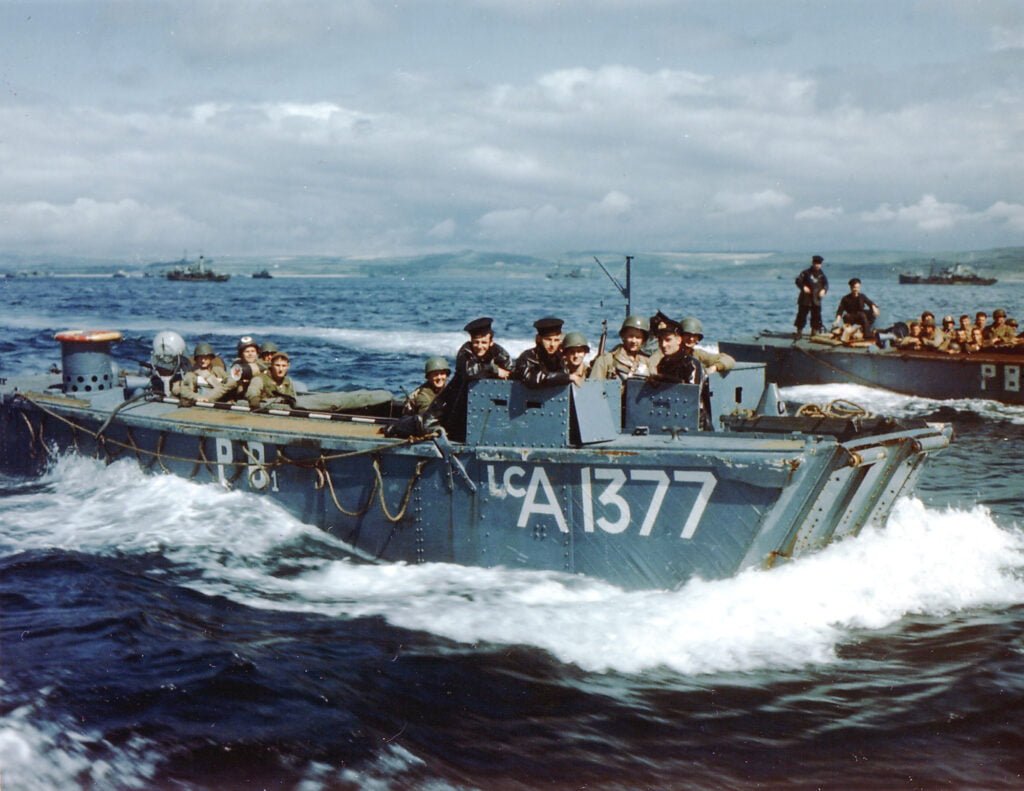The Landing Craft, Assault was the British equivalent of American LCVP. Both could carry about 35-36 fully-equipped infantry. The two craft had many different design features however, and had originally been intended for slightly different roles. The LCA was conceived for making a stealthy landing by a raiding party on an enemy coastline, so it had quiet engines.

Above: LCA 1377 of 507 Assault Flotilla, seen off Weymouth before D-Day. The two raised crew positions can be clearly seen, with Royal Navy crew in both. On board was a party from HQ 5th US Rangers. On D-Day these Rangers were part of the reinforcements for the Pointe du Hoc assault force. In the event they landed on Dog Green sector of Omaha Beach however. This craft was carried on D-Day by SS Prince Baudouin. (Photo: Conseil Régional de Basse-Normandie / US National Archives)
The LCA’s low silhouette was intended to make it harder to spot during such operations. However this gave it a lower freeboard (the distance from the water to the top of the craft’s side) and a greater chance of shipping water over the side. In the rough seas on D-Day, this sometimes proved to be a disadvantage, with some LCAs being swamped. The LCA still did sterling work. It was operated by British (Royal Navy and Royal Marines) crews, as well as the Royal Canadian Navy. On D-Day LCAs landed many US and Canadian troops, as well as British personnel.
The Landing Craft, Assault was easily recognisable due to the raised crew positions either side of the bow. The coxswain’s position was to starboard, and the Bren gunner’s was to port. Another feature of the craft was that it had armoured side decks that partly over-hung the cargo deck. These provided some protection from both enemy fire and sea spray. The LCA also had some armour on its sides. From the troops’ point of view, the LCA had a advantage in that it had three benches for troops to sit on, rather than having to sit on the deck.
Sources for more information:
Lavery, Brian, Assault Landing Craft: Design, Construction and Operations. (Barnsley: Seaforth, 2009)